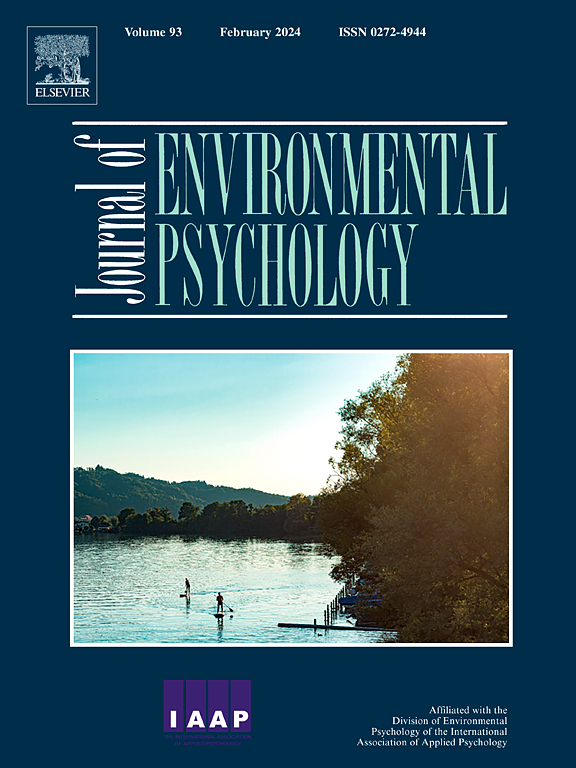Worry's Clout: Concern, not positive affectivity, drives climate activism
IF 6.1
1区 心理学
Q1 ENVIRONMENTAL STUDIES
引用次数: 0
Abstract
In a one-year, three-wave longitudinal study from July 2021 to July 2022, the relationship between climate-related worry, positive affectivity when reflecting on climate change, and climate activism was examined. The study involved a stratified sample of Germans aged 16–70 years, representative of both gender and age. To enable the analyses, the Climate Activism Scale (CLAC) was developed. Despite the urgency of the climate issue, only a minority of individuals actively participate in climate activism; violent or illegal forms of protest do not accurately represent climate activists. Using continuous time structural equation modeling, the findings reveal a reciprocal relationship between climate activism and worry about climate change. Climate worry predicts increased activism but activism also increases worry. The effects peak after one year. Climate positive affectivity does not predict activism; instead, engagement against climate change marginally decreases climate-related positive affectivity. The data also show that climate-related positive affectivity is a stronger indicator of denial-based hope rather than constructive hope. The findings emphasize the greater relevance of negative emotions in driving societal engagement against climate change. However, exploratory analyses reveal that emotional ambivalence—the combination of climate-related worry and positive affectivity—is more effective than worry alone in predicting climate activism.
求助全文
约1分钟内获得全文
求助全文
来源期刊

Journal of Environmental Psychology
Multiple-
CiteScore
10.60
自引率
8.70%
发文量
140
审稿时长
62 days
期刊介绍:
The Journal of Environmental Psychology is the premier journal in the field, serving individuals in a wide range of disciplines who have an interest in the scientific study of the transactions and interrelationships between people and their surroundings (including built, social, natural and virtual environments, the use and abuse of nature and natural resources, and sustainability-related behavior). The journal publishes internationally contributed empirical studies and reviews of research on these topics that advance new insights. As an important forum for the field, the journal publishes some of the most influential papers in the discipline that reflect the scientific development of environmental psychology. Contributions on theoretical, methodological, and practical aspects of all human-environment interactions are welcome, along with innovative or interdisciplinary approaches that have a psychological emphasis. Research areas include: •Psychological and behavioral aspects of people and nature •Cognitive mapping, spatial cognition and wayfinding •Ecological consequences of human actions •Theories of place, place attachment, and place identity •Environmental risks and hazards: perception, behavior, and management •Perception and evaluation of buildings and natural landscapes •Effects of physical and natural settings on human cognition and health •Theories of proenvironmental behavior, norms, attitudes, and personality •Psychology of sustainability and climate change •Psychological aspects of resource management and crises •Social use of space: crowding, privacy, territoriality, personal space •Design of, and experiences related to, the physical aspects of workplaces, schools, residences, public buildings and public space
 求助内容:
求助内容: 应助结果提醒方式:
应助结果提醒方式:


